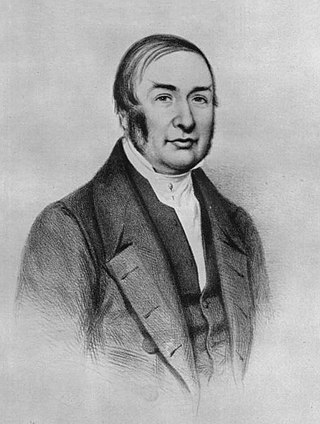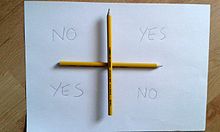
Hypnosis is a human condition involving focused attention, reduced peripheral awareness, and an enhanced capacity to respond to suggestion.
Hypnotherapy, also known as hypnotic medicine, is the use of hypnosis in psychotherapy. Hypnotherapy is generally not considered to be based on scientific evidence, and is rarely recommended in clinical practice guidelines. Reviews by psychologists have found hypnosis to be effective as an adjunctive treatment for a range of conditions, such as chronic and acute pain, irritable bowel syndrome, post-traumatic stress disorder, phobias and eating disorder. ”It is regarded as a type of alternative medicine.

Milton Hyland Erickson was an American psychiatrist and psychologist specializing in medical hypnosis and family therapy. He was the founding president of the American Society for Clinical Hypnosis. He is noted for his approach to the unconscious mind as creative and solution-generating. He is also noted for influencing brief therapy, strategic family therapy, family systems therapy, solution focused brief therapy, and neuro-linguistic programming.
Suggestibility is the quality of being inclined to accept and act on the suggestions of others. One may fill in gaps in certain memories with false information given by another when recalling a scenario or moment. Suggestibility uses cues to distort recollection: when the subject has been persistently told something about a past event, his or her memory of the event conforms to the repeated message.

James Braid was a Scottish surgeon, natural philosopher, and "gentleman scientist".

The Ouija, also known as a Ouija board, spirit board, talking board, or witch board, is a flat board marked with the letters of the Latin alphabet, the numbers 0–9, the words "yes", "no", and occasionally "hello" and "goodbye", along with various symbols and graphics. It uses a planchette as a movable indicator to spell out messages during a séance. Participants place their fingers on the planchette, and it is moved about the board to spell out words. The name "Ouija" is a trademark of Hasbro, but is often used generically to refer to any talking board.
Autosuggestion is a psychological technique related to the placebo effect, developed by pharmacist Émile Coué at the beginning of the 20th century. It is a form of self-induced suggestion in which individuals guide their own thoughts, feelings, or behavior. The technique is often used in self-hypnosis.
Self-hypnosis or auto-hypnosis is a form, a process, or the result of a self-induced hypnotic state.
Table-turning is a type of séance in which participants sit around a table, place their hands on it, and wait for rotations. The table was purportedly made to serve as a means of communicating with the spirits; the alphabet would be slowly spoken aloud and the table would tilt at the appropriate letter, thus spelling out words and sentences. The process is similar to that of a Ouija board. Scientists and skeptics consider table-turning to be the result of the ideomotor effect, or of conscious trickery.
Suggestion is the psychological process by which a person guides their own or another person's desired thoughts, feelings, and behaviors by presenting stimuli that may elicit them as reflexes instead of relying on conscious effort.
The development of concepts, beliefs and practices related to hypnosis and hypnotherapy have been documented since prehistoric to modern times.
Hypnotic susceptibility measures how easily a person can be hypnotized. Several types of scales are used; the most common are the Harvard Group Scale of Hypnotic Susceptibility and the Stanford Hypnotic Susceptibility Scales.
Age regression in therapy is a psycho-therapeutic process that aims to facilitate access to childhood memories, thoughts, and feelings. Age regression can be induced by hypnotherapy, which is a process where patients move their focus to memories of an earlier stage of life in order to explore these memories or to access difficult aspects of their personality.
Automatism is a set of brief unconscious or automatic behaviors, typically at least several seconds or minutes, while the subject is unaware of actions. This type of automatic behavior often occurs in certain types of epilepsy, such as complex partial seizures in those with temporal lobe epilepsy, or as a side effect of particular medications such as zolpidem.
Stage hypnosis is hypnosis performed in front of an audience for the purposes of entertainment, usually in a theater or club. A modern stage hypnosis performance typically delivers a comedic show rather than simply a demonstration to impress an audience with powers of persuasion. Apparent effects of amnesia, mood altering and hallucination may be demonstrated in a normal presentation. Stage hypnosis performances often encourage audience members to look further into the benefits of hypnotism.
Theodore Xenophon Barber (1927–2005) was an American psychologist who researched and wrote on the subject of hypnosis, publishing over 200 articles and eight books on that and related topics. He was the chief psychologist at Cushing Hospital, Framingham, Massachusetts, from 1978 to 1986. Barber was a noted critic of the field of hypnosis, questioning the ways in which the concept of hypnosis had been used as an umbrella term for diverse phenomena. Barber was one of the first two prominent anglophone psychologists, along with Theodore Sarbin, to question the "altered-state model" of "state model" of hypnosis, arguing that the varied phenomena labeled "hypnosis" could be explained without resorting to the notion of an altered state of consciousness.
Sports hypnosis refers to the use of hypnotherapy with athletes in order to enhance sporting performance. Hypnosis in sports has therapeutic and performance-enhancing functions. The mental state of athletes during training and competition is said to impact performance. Hypnosis is a form of mental training and can therefore contribute to enhancing athletic execution. Sports hypnosis is used by athletes, coaches and psychologists.
Animal magnetism, also known as mesmerism, is a theory invented by German doctor Franz Mesmer in the 18th century. It posits the existence of an invisible natural force (Lebensmagnetismus) possessed by all living things, including humans, animals, and vegetables. He claimed that the force could have physical effects, including healing.
Josephine Rohrs Hilgard was an American developmental psychologist, psychiatrist, and psychoanalyst. She was a clinical professor in the Department of Psychiatry at Stanford Medical School. She conducted research on mental health and developed the theory of "anniversary reactions", which described how psychiatric issues might be triggered at anniversaries of significant events in a patient's life. She also specialized in hypnotherapy, and published research on the theory and practice of hypnosis.
The Hypnotic Ego-Strengthening Procedure, incorporating its constituent, influential hypnotherapeutic monologue — which delivered an incremental sequence of both suggestions for within-hypnotic influence and suggestions for post-hypnotic influence — was developed and promoted by the British consultant psychiatrist, John Heywood Hartland (1901–1977) in the 1960s.







